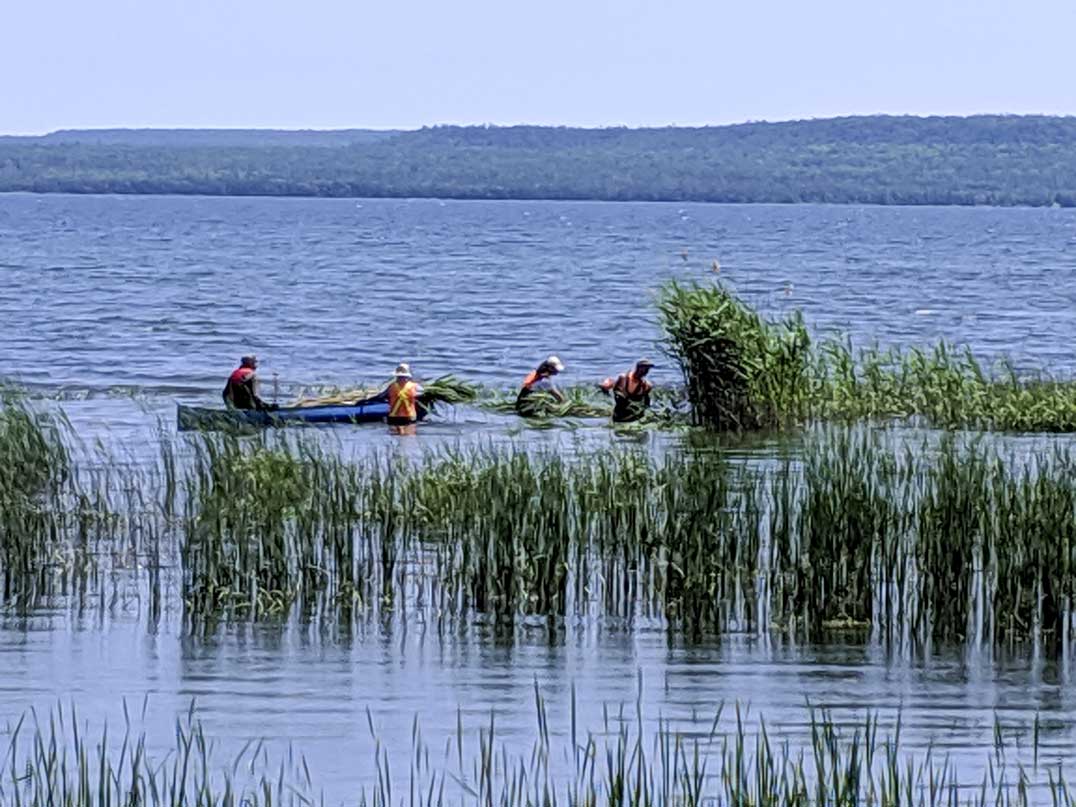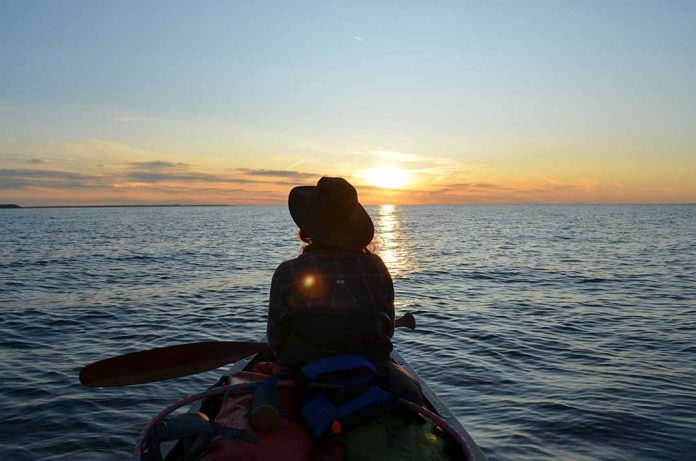Four-year endeavour to rid Island of invasive reed deemed a success, but still more work to do
MICHAEL’S BAY – It has been a hectic four years, and quite the body bash, for Manitoulin Phragmites Project coordinator biologist Judith Jones and her hardy band of anti-phrag colleagues—but the success of the project in clearing the invasive reed has made all of the blisters and aching muscles worthwhile.
The Manitoulin Phragmites Project (MPP) was funded for a three-year cycle, this year being the last of the triad of clearing seasons, but the work really began with a one-year project in 2016. Over the course of the project 50 to 60 locations across Manitoulin have been cleared of the invasive grass—thanks to $400,000 in funding (50 percent federal, 25 percent provincial and the rest from a combination of other donors) an astounding 17 hectares of phragmites has been cleared from the Manitou River to the other side of Blue Jay Creek.
“There is now a beautiful stretch of sand beach,” said Ms. Jones.
But there is still work to be done. “I really believe that if we had just one more year of the project it would make a big difference,” she said. The biologist said she hopes the initial success of the project in combating the invasive species that has exploded on Manitoulin shorelines in recent years will bring the funding partners onside for a final push.
Phragmites, once established, will create a dense barrier that pushes out native grasses and reeds to create a dense and almost impenetrable barrier that interrupts the breeding of turtles, fish species and a host of other aquatic and semi-aquatic native species.
Phragmites, although often brought to North America as a decorative plant, are also an unsightly blight upon the shoreline, its tall dense stands blocking views of the water for even shoreline abodes.
The Manitoulin Phragmites Project was powered not only by government funding, crucial to the acquisition of underwater cutting machines called Truxors and the barges on which the cut grasses are loaded, but also a veritable host of volunteers from organizations such as Manitoulin Streams and the assistance of local municipalities which lent public works dumptrucks to haul away the plant material.
Just as important as the physical labour and machinery involved in the effort to remove phragmites from Manitoulin’s shore has been the educational and citizen science components.

Shoreline property owners have been educated on what to look for so they can identify and eradicate phragmites on their own beaches before it can be established. “Once it is established it is very challenging to get rid of phragmites,” said Ms. Jones. But the MPP has proved that the job can be done.
Hundreds of pairs of eyes have been put to work spotting and reporting stands of phragmites through the online Facebook and website pages, helping the project coordinate and marshal its forces effectively.
“We still want people to report sightings, and don’t be discouraged if I haven’t gotten back to you yet, there is a bit of backlog we are working through,” said Ms. Jones, “but it is really important to know where they are.”
Ms. Jones admits that there is still a substantial amount of phragmites in some areas of the Island, particularly Wiikwemkoong, “there is a very bad infestation there,” but she said that she hopes those stands will also be dealt with.
The equipment to deal with phragmites stands in water and along shorelines is expensive. The Truxors ring in at $7,000 a day, then there are the barges, trucks and other support equipment. But purchasing the units outright would up the ante exponentially. “The Truxors alone cost over $100,000 each and are built in Sweden,” explained Ms. Jones.
On the educational front, a YouTube video has been produced that will help individuals find out what to do about phragmites on their property.
Ms. Jones has also collected DNA samples that she is sending on to Trent University to help determine if the phragmites Manitoulin is dealing with is still purely an invasive species or if the invasive version has mingled with the native species to create a hybrid. While Ms. Jones said she doesn’t subscribe to the native/non-native concept, as both seem to be aggressively pushing out local species.
Sightings can be reported by email to
manitoulinphrag@yahoo.com.
Ms. Jones said one of her ongoing projects is to ensure that the Ministry of Transportation deals adequately with the phragmites stands that are to be found at the roadside across Manitoulin. “They did manage to do some work with the stretch of highway between Honora and Kagawong,” she said. “It’s supposed to be standard MTO practice to deal with invasive species, but that seems to have fallen down between Silver Water and Meldrum Bay.”
The bulk of phragmites on Manitoulin shores may have been successfully beaten back, but the battle is far from over. Residents are urged to remain vigilant, to educate themselves on what to look for when it comes to invasive species like phragmites and to deal with them expeditiously so that they do not become established and much more difficult to deal with.





